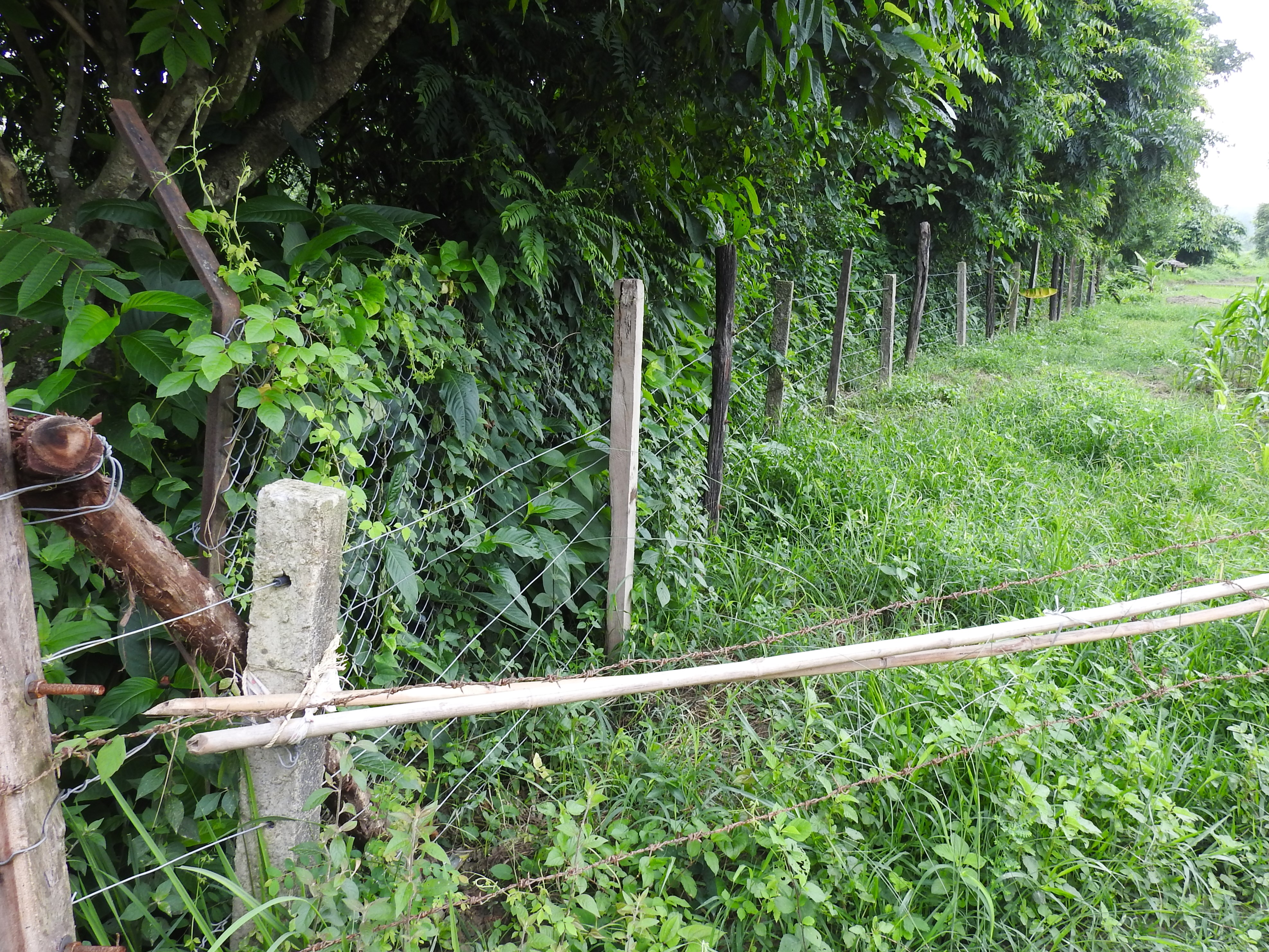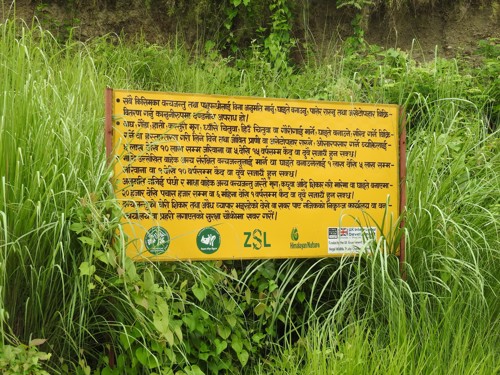Reclaiming fields and restoring hopes

Electric fence in Baghuban. Credit - Asmita Pandey.
Reclaiming fields and restoring hope: The story of Tamaspur and Baghuban
The Magar communities of Tamaspur and Baghuban in the buffer zone of Chitwan National Park depend on agriculture for their livelihoods. The fertile soil of the Terai once yielded enough grain and vegetables to sustain families and to sell in the local markets. But living at the edge of a forest with rhinos and wild boars also brings constant struggles.
Over the years, these communities have faced an increasing number of crop-raiding incidents. Herds of wild boar have trampled through maize fields overnight, and rhinos have feasted on the ripening harvests. Families would wake up to find months of hard work destroyed in just a few hours. The damage was so frequent that many farmers abandoned their lands altogether, losing not only their crops but also a vital part of their cultural identity tied to farming.
In 2017, the Chitwan National Park authorities constructed electric fencing around the farmlands of Tamaspur and Baghuban. Initially, the fence worked well and offered much-needed protection. Farmers began to hope again. But over time, the fence wore down. Without proper maintenance, the wires sagged, posts broke, and the power lines no longer kept the animals away. By the time the system collapsed, the community was too disheartened and resource-constrained to repair it. The fields once more lay vulnerable, and large portions of land were abandoned.
This was the reality until Zoological Society of London (ZSL) Nepal stepped in through the project ‘Combating IWT: Strengthening partnerships and promoting resiliency of local communities’. Recognising that a small but strategic investment could make a huge difference, the project supported the maintenance of 2.4 km of electric fencing in Baghuban and 7 km in Tamaspur. What seemed like just wires and posts to outsiders represented a wall of hope to the villagers.

The results have been remarkable. The restored fencing has brought 63 ha of farmland in Baghuban and 197 ha in Tamaspur back into cultivation. Fields that once lay barren are now green with paddy, maize, and vegetables. Farmers who had left their land unattended for years have returned with renewed energy. The community life has grown stronger as people gather again to work their fields, share seeds, and celebrate harvests.
The benefits extend far beyond individual households. With around 600 – 700 families now protected from wildlife raids, food security has improved, and incomes are stabilising. For the communities, the fence is more than just a physical barrier — it is a bridge between conservation and livelihoods.
“We had almost given up farming. Now, with the fence repaired, our fields are alive again,” says Purna Bahadur Thapa Magar, a resident of Binayi Tribeni-1, Baghuban, Nawalpur.
“We had almost given up farming. Now, with the fence repaired, our fields are alive again.”
Following the completion of the project, regular care and maintenance of the electric fences will be managed through a community-led approach. Local institutions, who have the required budget, manpower, and skillset, have already taken responsibility for managing and maintaining the fence. Additionally, the Chitwan National Park authorities will continue to play a supervisory and supportive role, acting as guardians of the project’s outcomes and ensuring regular monitoring.
The project has been closely linked with the Binayi Tribeni Rural Municipality and the Office of Madhyabindu Municipality Ward No 12, who have provided policy and legal backing to ensure local ownership and accountability, as well as regular monitoring. Another project activity is providing income-generating opportunities through supporting alternative livelihoods, through groups and funds.
In terms of financial sustainability, the income stabilisation initiatives introduced by the project - through livelihood diversification and capacity-building support - are designed to economically empower communities. This increased stability allows for part of the community-generated income to be reinvested into fence maintenance and other coexistence measures.
Beyond the physical infrastructure, the project’s sustainability will be further strengthened through raising awareness in and informing the community about sectors related to conservation and illegal wildlife trade. This sustainability will also be supported through capacity building in terms of leadership and income, and cross-sectoral linkages with local government and buffer zone institutions. These measures aim to build local stewardship and ensure that the benefits of the project extend well beyond its formal completion.
Written by Asmita Pandey and Arjun Bhusal. For more information on this Illegal Wildlife Trade Challenge Fund Main project IWT135, led by Zoological Society of London (ZSL), please click here.

 Back
Back